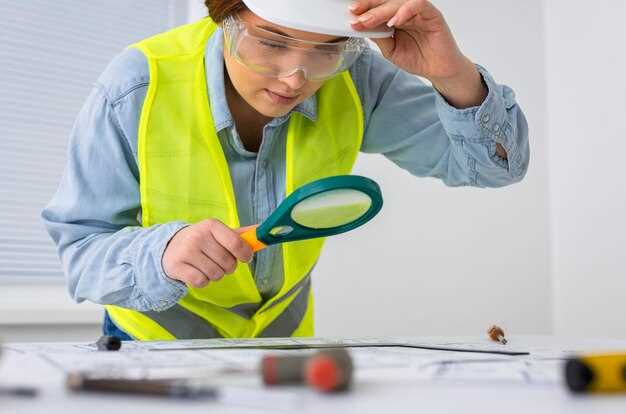
In the field of restoration, understanding the core elements that signify quality work is essential for both clients and professionals. Restoration projects, whether they involve historic buildings, artwork, or natural landscapes, require a meticulous approach to ensure that the integrity and authenticity of the original work are preserved. To navigate the complexities of restoration, one must rely on key indicators that reflect the level of craftsmanship and expertise involved in the process.
A thorough review of completed restoration projects can provide valuable insights into what constitutes high-quality work. Key indicators include the qualifications of the professionals involved, the materials used, and adherence to industry standards. Engaging with an expert in restoration can help stakeholders assess these factors and make informed decisions regarding their own projects.
Quality restoration work is not only about aesthetic outcomes; it also encompasses technical proficiency and respect for the original design and materials. By focusing on these indicators, clients can ensure that their restoration efforts yield lasting results and honor the historical significance of the work being restored.
Evaluating Material Standards in Restoration Projects

In the realm of restoration work, the quality of materials used is paramount to the success and longevity of a project. Evaluating material standards ensures that the integrity of historical structures is preserved while also meeting contemporary safety requirements. An expert approach to materials assessment can significantly influence the outcome of restoration projects.
- Compatibility: The chosen materials must be compatible with the existing structure. Using inappropriate materials can lead to further degradation. Experts recommend conducting thorough compatibility tests to ensure harmony with original elements.
- Durability: Restoration materials should be durable enough to withstand environmental conditions. Evaluating weather resistance, UV stability, and overall lifespan is critical. Experts often rely on historical data and recent advancements in material science to make informed choices.
- Authenticity: Maintaining the historic character of a building is essential. Quality standards should prioritize the use of original materials or exact replicas to ensure authenticity. Expert restorers often engage in extensive research to identify the most suitable options.
- Sustainability: Increasingly, quality restoration work considers sustainability. Evaluating materials for their environmental impact is essential. Experts advocate for the use of recycled or eco-friendly materials where possible, aligning restoration practices with modern ecological standards.
To effectively evaluate material standards, it is crucial to establish a thorough assessment protocol. This may include:
- Visual Inspection: A detailed examination of materials for signs of wear or damage.
- Laboratory Testing: Conducting tests to assess chemical properties and structural integrity.
- Documentation Review: Analyzing historical records or previous restoration work to inform material choices.
- Expert Consultation: Engaging industry professionals can provide insights into the best practices and standards.
Ultimately, rigorous evaluation of material standards is crucial in restoration projects. By prioritizing quality and expert insight, restorers can ensure that their work not only honors the past but also lays the groundwork for the future.
Assessing the Expertise of Restoration Professionals
Evaluating the expertise of restoration professionals is crucial to ensuring quality results in any restoration project. A well-informed assessment involves examining their credentials, previous work, and customer reviews.
First, check the qualifications and certifications of restoration professionals. Relevant certifications from recognized organizations demonstrate their commitment to industry standards. These credentials often indicate a strong foundation in restoration techniques and safety protocols.
Next, review their portfolio showcasing past restoration projects. A comprehensive portfolio highlights their skills and versatility across different types of restoration work, such as water, fire, or mold damage. Pay attention to the quality of craftsmanship and attention to detail exhibited in their previous jobs.
Additionally, customer reviews can provide valuable insights into a professional’s reliability and quality of service. Positive feedback from past clients indicates a restoration expert’s proficiency in managing projects efficiently and delivering satisfactory results. Conversely, negative reviews may reveal recurring issues, such as poor communication or inadequate workmanship.
It’s also beneficial to seek references and directly contact previous clients. Asking specific questions about the restoration process, timelines, and outcomes can clarify what to expect from a potential contractor.
Ultimately, a thorough assessment of restoration professionals encompasses verifying qualifications, evaluating past work, and gathering independent reviews. This comprehensive approach helps ensure that the chosen expert will deliver the quality restoration services needed for any project.
Monitoring Workmanship and Finishing Techniques

In the realm of restoration, monitoring workmanship and finishing techniques is crucial to ensuring the quality of the final outcome. The restoration process often involves complex procedures that demand a high level of skill and attention to detail. It is essential to have structured review mechanisms in place to assess the quality of work performed at various stages of the restoration project.
Effective monitoring begins with setting clear standards for workmanship. These standards should outline expected outcomes in terms of surface preparation, material application, and the final finish. Regular quality checks during the restoration process help to identify any deviations from these standards early, allowing for timely corrections that prevent further issues down the line.
Finishing techniques play a significant role in the overall aesthetic and durability of the restored piece. Techniques such as sanding, painting, varnishing, or sealing must be executed with precision to achieve a professional appearance. Review sessions focusing specifically on these techniques can provide valuable insights into the craftsmanship exhibited, allowing for constructive feedback and skill enhancement.
Incorporating technology into the monitoring process can further elevate the quality of workmanship. Utilizing tools such as digital imaging or moisture meters can help in evaluating the conditions of materials and finishes. This technological integration can facilitate a more detailed review of the restoration work, leading to informed decisions regarding necessary adjustments.
Ultimately, continuous training and skill development for restoration professionals are vital. Regular workshops and hands-on sessions focusing on advanced finishing techniques can significantly improve the quality of work delivered. By fostering an environment of learning and improvement, the industry can maintain high standards in restoration projects, yielding results that meet or exceed expectations.




